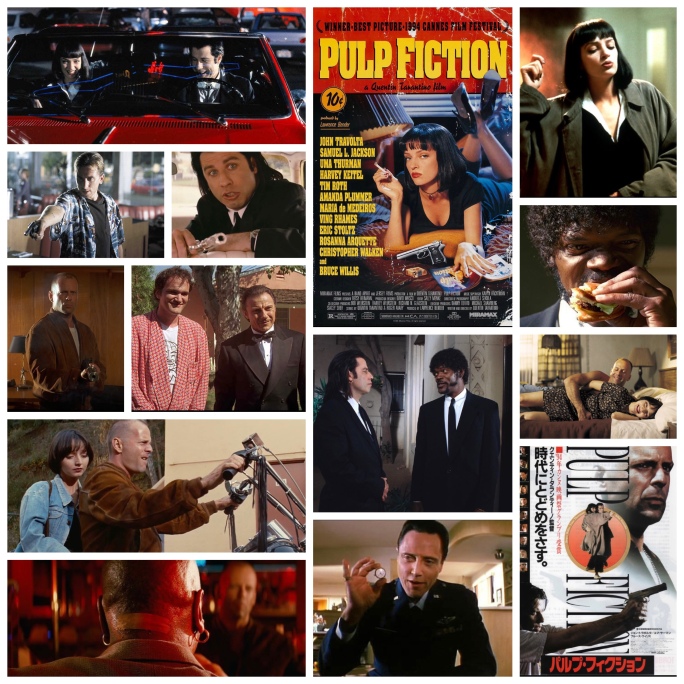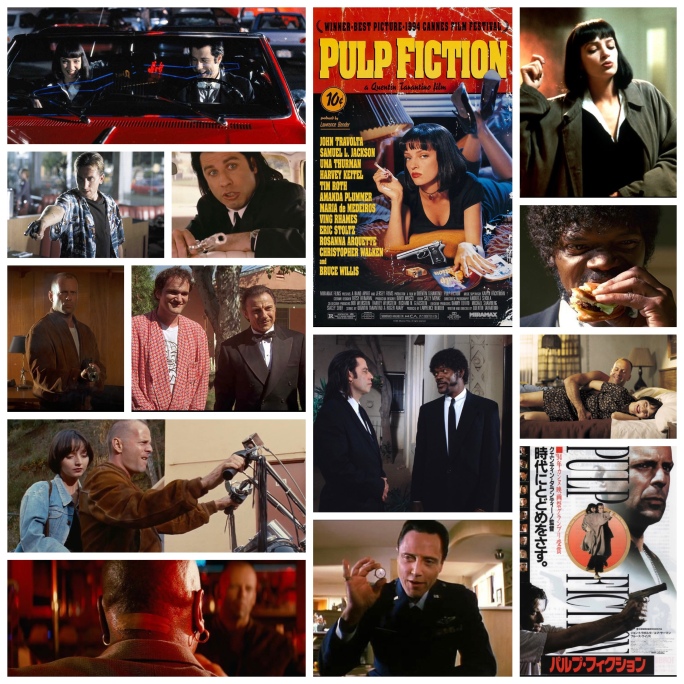
You ever been to one of those house parties that turns out so well, is so full of awesome, entertaining people and so much fun that you kind of wish it wouldn’t end? Quentin Tarantino’s Pulp Fiction is like that, for nearly three hours you wish would extend into three more. It’s one of those urban mosaic stories that chucks slices of life into a pan, fries them up and hurls the resulting delicious recipe right at your face. I’ve read a lot about how this revolutionized narrative structure in Hollywood or changed the way characters are written and that may be the case for the crime genre, but the mosaic motif was present in many areas before QT, namely in the films of Robert Altman, a filmmaker I’ve never seen compared to our Quentin before but the parallels are there. In any case everyone knows, loves and agrees that Pulp Fiction is a fucking badass flick, an enduring barnstormer of outlaw cinema that is every bit as potent, catchy and kinetic as it was when it blew the pants and panties off of Cannes in ‘94.
Tarantino gave us an appetizer with Reservoir Dogs, and with Pulp he produced a ten course meal that’s more polished, structured and assured than we had seen before. His mosaic concerns the lives of several LA individuals all directly or indirectly related to the criminal underworld. Samuel L. Jackson and John Travolta are two hitmen who dressed like Men In Black before Men In Black was a thing, out to retrieve the ever mysterious briefcase for their omnipotent gangster overlord (Ving Rhames), whose sultry wife (Uma Thurman) Travolta is to entertain while the big man is out of town. Elsewhere a disloyal prizefighter (Bruce Willis) and his bubbly girlfriend (Maria De Medeiros) hide out from Rhames’s wrath too until Willis goes from the frying pan into one terrifying fire. Tim Roth and Amanda Plummer are two liquor store bandits who branch off into the diner scene and royally fuck up everyone’s day in the process. Christopher Walken gives arguably his greatest and definitely his most bizarre monologue in a scene out of place and time from the rest of the film but somehow right where it needs to be in the narrative. Harvey Keitel suaves it up as LA’s resident 007. Others make vivid impressions in the mosaic including Eric Stoltz, Rosanna Arquette, Steve Buscemi, Paul Calderon, Frank Whaley, Angela Jones, Duane Whitaker, Stephen Hibbert, Tarantino himself, Julia Sweeney and perennial bad guy Peter Greene.
By now the story is secondary to those iconic moments we all know and love. Zed’s dead. Samuel’s terrifying bible session. A wristwatch up Walken’s ass. Pride only hurts, it never helps. That needle to the heart. The dance competition. The Gimp. The exploding head. These are all now hallmarks of one of the greatest stories ever put to film. What makes it so great? Tarantino has the time for his characters, and wants to converse with them. The dialogue isn’t just about plot or characters intimidating each other. It’s about life, music, personal taste, culture and cheeseburgers. These are people who remind us of many others we know, and the relatability is what has turned this into a platinum classic. That and other factors, including a killer soundtrack, brilliant performances round the board and editing that brings LA out of the gloss, down to earth and just as dirty. It may not be my ultimate fave Tarantino film, but it is definitely his flagship outing so far, in its epic scope. We’ll see if this year’s Once Upon A Time In Hollywood perhaps dethrones it as his magnum opus, who knows. Either way it’s a masterpiece and will remain so for all time.
-Nate Hill
